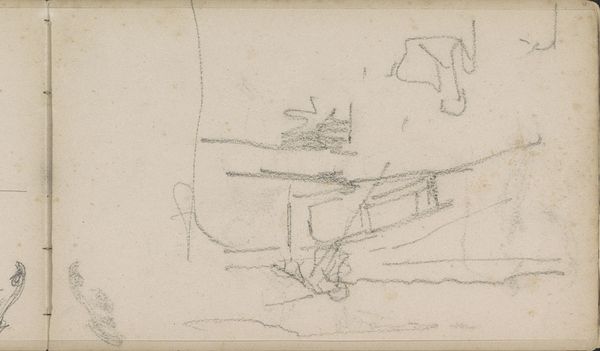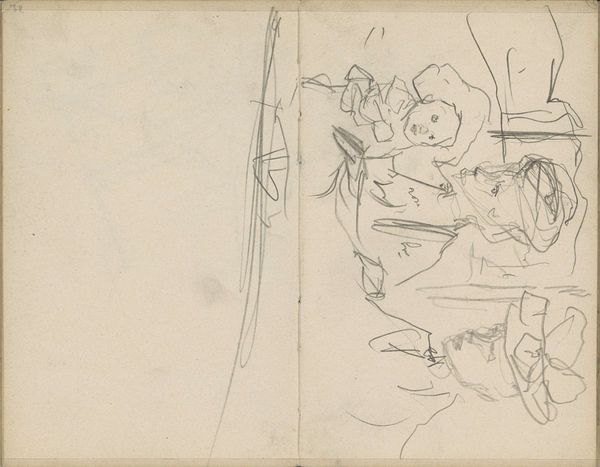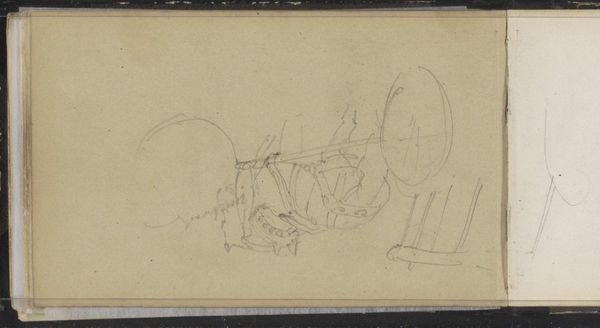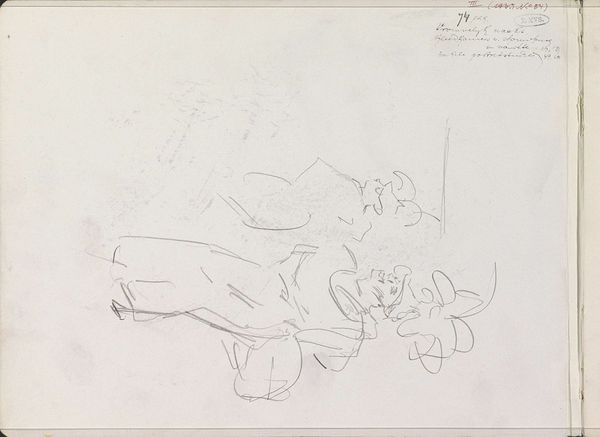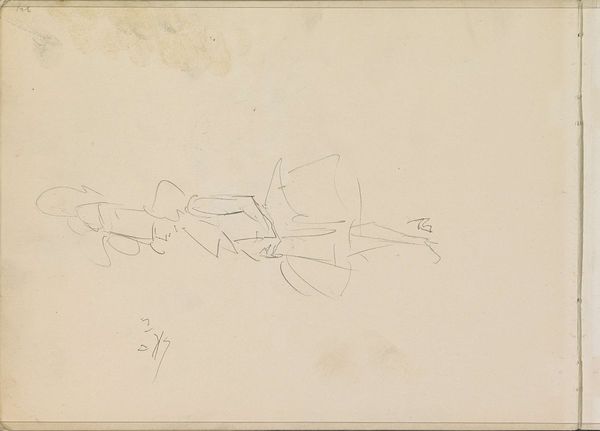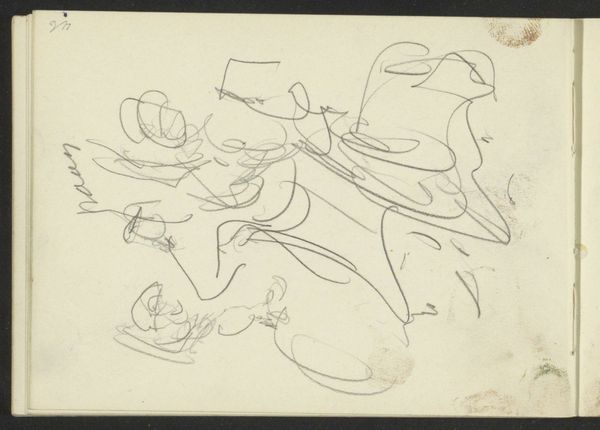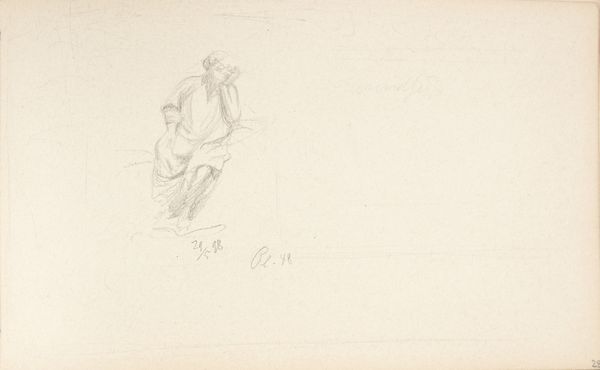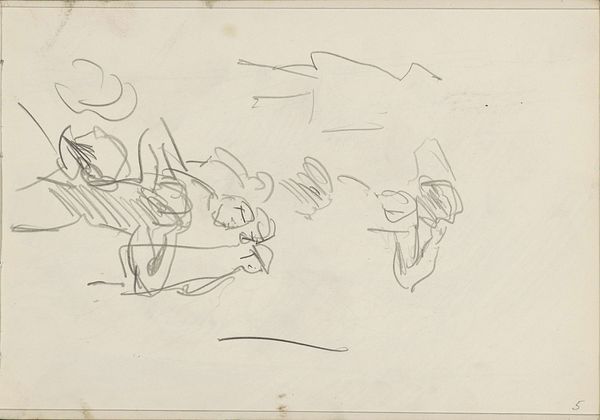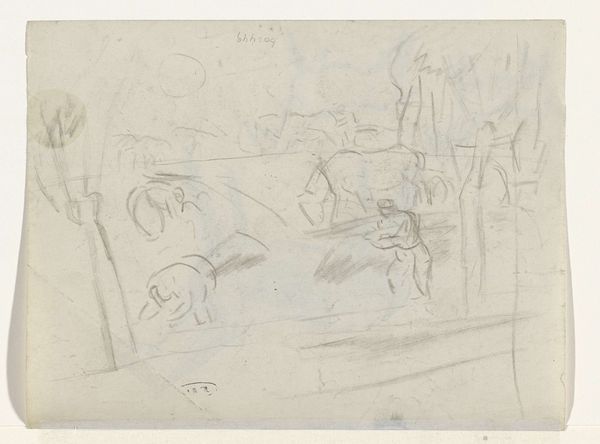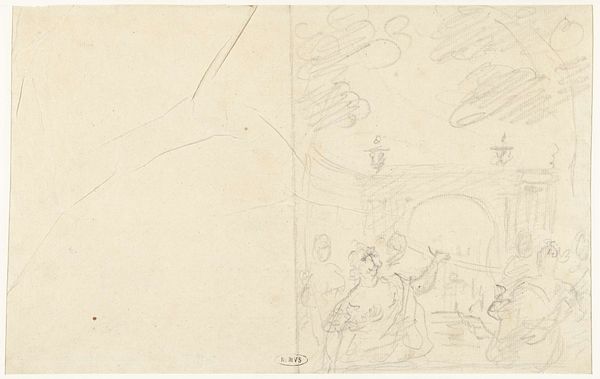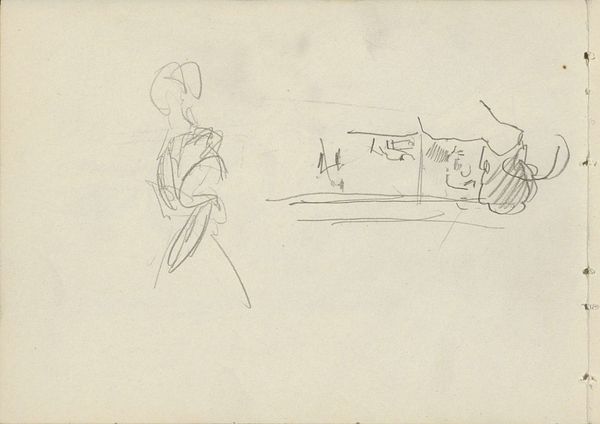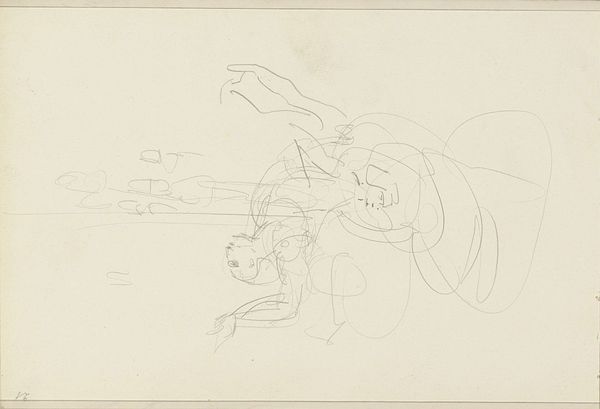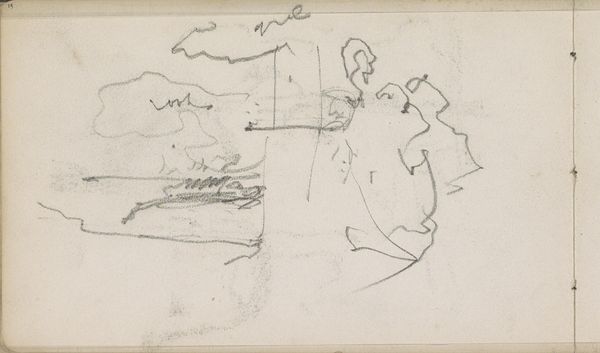
Copyright: Rijks Museum: Open Domain
Curator: Breitner's "Figure Studies and Studies of Horses" made between 1880 and 1882 offers a glimpse into the artist’s creative process. Created with pencil and graphite, this drawing now resides in the Rijksmuseum collection. Editor: It's so raw, almost frantic, isn't it? The barely-there lines seem to capture a sense of fleeting moments. I immediately feel the movement, the energy of figures and horses caught mid-stride. Curator: Absolutely. Breitner was very interested in depicting the modern city, particularly the hustle and bustle of working-class life. Studies like these, even if incomplete, were crucial to how he eventually translated that energy onto canvas. His sketches acted as visual notes for more elaborate pieces. It is fascinating to see an image of everyday life emerge from this combination of figuration and romanticism. Editor: And the horses... there’s an interesting tension there. Horses are traditionally symbols of power and nobility, yet here, they’re reduced to simple outlines, almost abstracted. Does this downplaying reflect Breitner's views on societal power structures at the time? Was this the beginning of new imagery and political understanding of such animal figure in the public sphere? Curator: That's a valid interpretation. Given Breitner's preference for depicting ordinary city life and working-class subjects, it's plausible he wanted to challenge traditional, idealized representations. Art institutions began depicting working class life with renewed interest and such political interest may also be extended to depictions of animal figures. Editor: It’s a far cry from grand equestrian portraits that glorified aristocracy. The rapidly drawn composition makes it a more equitable representation. This more egalitarian approach also translates to gender since we can observe women being active and participating in modern public life. Curator: He was very much a product of his time, reflecting the burgeoning Realist movement in the Netherlands. Editor: It truly encapsulates his genius. It's a window into not just his art, but his perspective, questioning societal norms one quick stroke at a time. It reminds us how art can capture the feeling of a specific moment and become a time capsule of revolutionary times. Curator: Indeed, Breitner’s work compels us to think about the evolution of art’s role, from mere representation to becoming an active participant in the socio-political dialogues of the era.
Comments
No comments
Be the first to comment and join the conversation on the ultimate creative platform.
